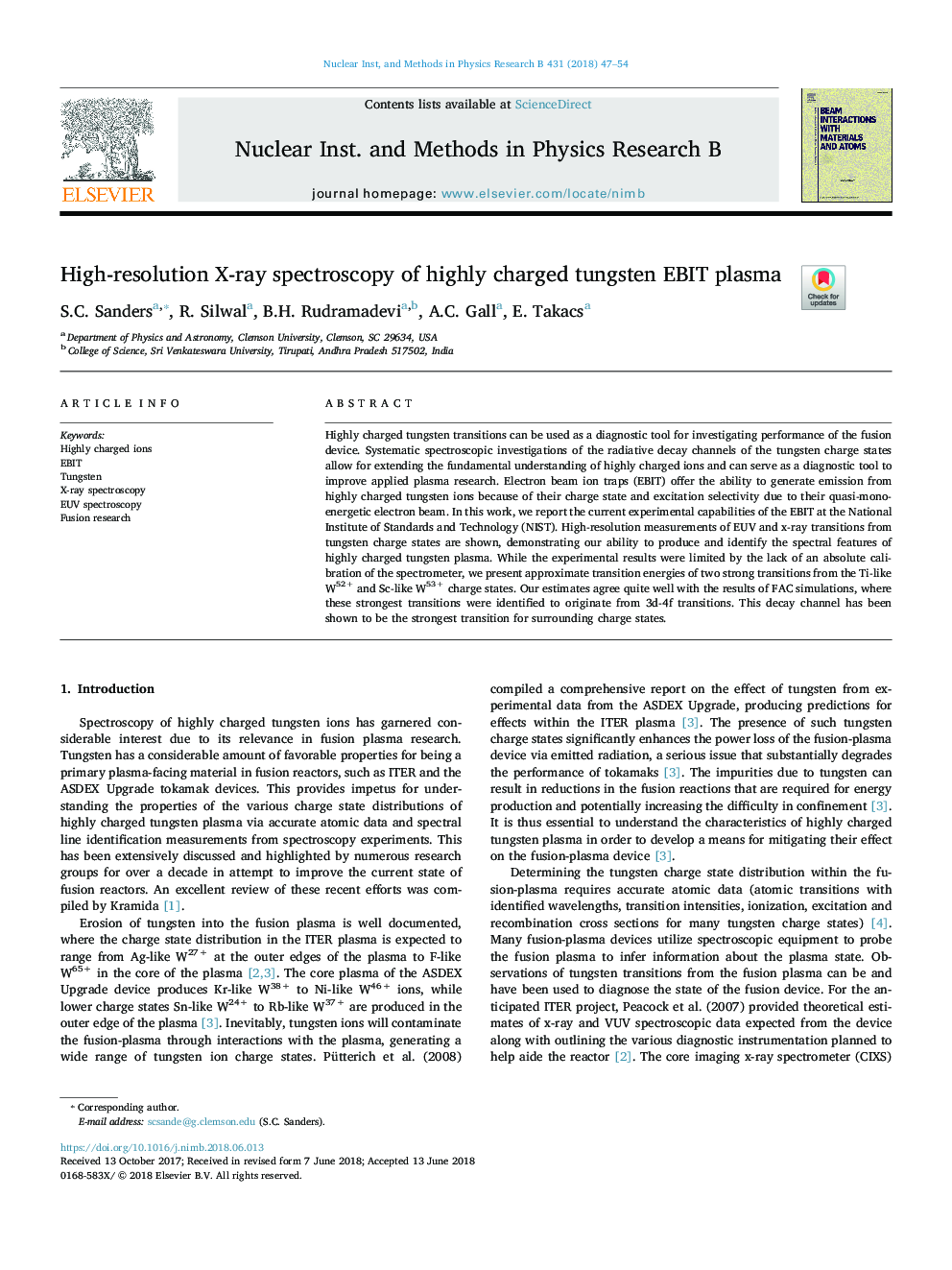| Article ID | Journal | Published Year | Pages | File Type |
|---|---|---|---|---|
| 8039059 | Nuclear Instruments and Methods in Physics Research Section B: Beam Interactions with Materials and Atoms | 2018 | 8 Pages |
Abstract
Highly charged tungsten transitions can be used as a diagnostic tool for investigating performance of the fusion device. Systematic spectroscopic investigations of the radiative decay channels of the tungsten charge states allow for extending the fundamental understanding of highly charged ions and can serve as a diagnostic tool to improve applied plasma research. Electron beam ion traps (EBIT) offer the ability to generate emission from highly charged tungsten ions because of their charge state and excitation selectivity due to their quasi-monoenergetic electron beam. In this work, we report the current experimental capabilities of the EBIT at the National Institute of Standards and Technology (NIST). High-resolution measurements of EUV and x-ray transitions from tungsten charge states are shown, demonstrating our ability to produce and identify the spectral features of highly charged tungsten plasma. While the experimental results were limited by the lack of an absolute calibration of the spectrometer, we present approximate transition energies of two strong transitions from the Ti-like W52+ and Sc-like W53+ charge states. Our estimates agree quite well with the results of FAC simulations, where these strongest transitions were identified to originate from 3d-4f transitions. This decay channel has been shown to be the strongest transition for surrounding charge states.
Related Topics
Physical Sciences and Engineering
Materials Science
Surfaces, Coatings and Films
Authors
S.C. Sanders, R. Silwal, B.H. Rudramadevi, A.C. Gall, E. Takacs,
